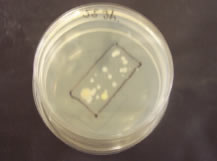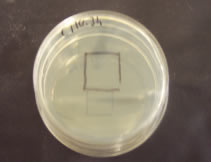October 6, 2009
FOR IMMEDIATE RELEASE
NEW YORK, NY— Kids now are back in school and soon it will be time to start on science projects. Students can get a head start on the research and choose copper as a topic, the multi-purpose metal that's been around for 10,000 years.
Today, copper is one of the most widely used metals in the world. Copper's value was captured as early as 5,000 B.C., the dawn of metallurgy. Metal smiths discovered that mixing metals would create alloys that were stronger, lighter or easier to use, according to the Copper Development Association. Thousands of years ago, it was discovered that copper combined with tin made bronze, and copper alloyed with zinc made brass. Pure copper and more than 400 copper alloys are in use today.
Copper's Many Uses
- Copper is highly conductive, meaning it's very good for transmitting electricity and heat.
- Copper is malleable. It can be hammered, stretched or rolled into various shapes, while still maintaining its strength.
- Most coins have been made from copper, as well as jewelry, works of art and pots and pans.
- Copper has been used for its antimicrobial property throughout the ages.
See for yourself what copper can do.
Copper Experiment 1: Try the Fingerprint Disinfection Test, a simple science experiment you can do to compare the antimicrobial properties of stainless steel and copper.
 Stainless Steel S304 with Extensive Growth
Stainless Steel S304 with Extensive Growth Copper C110 showing no growth
Copper C110 showing no growthCopper Experiment 2: See what happens when you take 10 dirty pennies and wash them in a mixture of lemon juice, vinegar and salt. What does the mixture do?
Check out the project - and the answer.
5 Things You Need To Know About Science Fairs
- Science fairs became popular in the U.S. in the early 1950s. The Intel Science and Engineering Fair (ISEF) had 30 entrants in 1950. By 2009, it had grown exponentially, providing a forum for more than 1,500 high school students from more than 50 countries.
- Science fair season starts in January and goes through April. Each year, millions of students worldwide compete in school-sponsored science fairs and the winners go on to participate in 500 Intel ISEF-affiliated regional and state fairs with the possibility being accepted to the annual Intel ISEF fair.
- The Intel ISEF is the premiere science competition in the world for students in grades 9-12. Doctoral level scientists judge the competition, which offers more than $4 million in prizes and scholarships.
- The Intel Science Talent Search (STS), formerly known as Westinghouse, is America's most prestigious science research competition for high school students. Each spring, 40 finalists are chosen from a national student pool of thousands to attend the Intel Science Talent Institute in Washington, D.C. Finalists compete for more than $1 million in scholarship and grants. The grand prize is a $100,000 scholarship.
- Seven STS winners have gone on to earn the Nobel Prize. Thirty-three former winners have been named to the National Academy of Sciences.
Source: Society for Science and the Public
###
